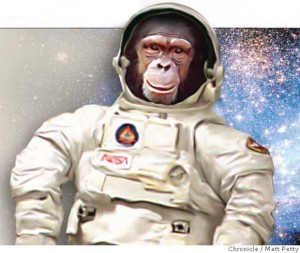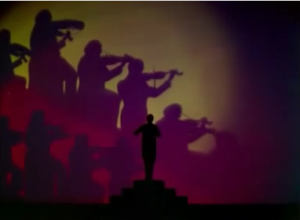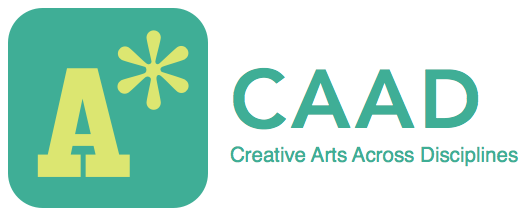We have three wonderful projects underway in Poughkeepsie with a group of ten students. While the three projects are all radically unique, they all capture the CAAD spirit of integrating the creative arts with different academic disciplines. Last Wednesday we had our first group roundtable to hear about the progress that has been made in the first two weeks of work.
First, we heard from Create and Control, made up of Omri Bareket, a drama and math major, Andrea Orejarena, a cognitive science major, and Carson Packer, and computer science major. Create and Control’s final project will be a science fiction theater production incorporating interactive storytelling by giving the audience control of certain production elements throughout the show. They seek to ask questions such as “Will theater become more immersive in the future?” and “What is consciousness?” as it relates to artificial intelligence.
Here’s Andrea writing in the group blog about their developing plot:
We have a plot! A scientist is murdered and his AI is accused of killing him— straight out of IRobot. Although you probably couldn’t tell because there are a million other stories like this. Fear of robot “domination”(?) has been around since Čapek’s 1920’s play Rossum’s Universal Robot. But this isn’t our fear and this isn’t our focus. What really interested me from IRobot, which was very very informed by many debates with my fellow cog sci peers (shoutout), is whether or not this robot can be judged ‘guilty’. I don’t even know what I fully think yet. And I’ve been thinking about it for the past three years (either directly or indirectly).

I looked back on a book I read where a robot monkey was given human-like emotions and attributes and sent to the moon as a companion to an astronaut. This was for the sake of the astronaut’s mental health. The book takes place upon their return, in a court room, where they are debating whether the robot company has the right to ‘disconnect’ the robot or if this would be considered ‘murder’. ~AKA~ Because of it’s hinting-towards-cognition behavior, is this robot monkey now considered a ‘person’? Stay tuned.
Next, Sensory Panels presented on their plan to integrate philosophical texts with music and visual art. They explained that of the three of them, at least two have an expertise in two of these categories, which helps the group function non-hierarchically. Gordon Schmidt, a Greek and Roman studies and philosophy double-major, also has a background in music, Henry Krusoe, also a philosophy major, has a background in visual art, and Jonah Parker, a studio art major, has a passion for music. The three plan on using projections in a small space to capture dimensions of classic philosophical texts that are sometimes left out in the classroom.
 Here’s Henry describing some of his group’s research process:
Here’s Henry describing some of his group’s research process:
This week we watched Disney’s Fantasia (we showed ourselves no mercy
and watched the uncut 2+ hours). I was struck by the opening episode and the last. The first was a pure illustration of
visual abstraction of musical forms. Part of this abstraction involved playing this stacks and layers of shadows the orchestra members on a colored screen. To me the orchestra mirrored the chained prisoners (they remain rooted in the pit throughout the performance) with the peculiar double resonance that they were watching their own shadows cast on the wall of their “cave.” The last scene also reminded me of the cave. It depicts the revelry of a hoard of demons giving way to a procession of figures ushering in the dawn. This scene, and particularly the last image which pans through a dark cavernous building to on to a vista of the breaking dawn, reminded me of Plato’s description of ascent from darkness into the light of day.
Finally, Do You Hear What I Here? taught us that there is no divide between art and science, although this idea has yet to reach the Hudson Valley. The group is composed of two “scientists” and two “artists,” but they are working hard to break down the divides that traditionally separate their disciplines. Elisabeth Boyce-Jacino and Maya Enriquez are both cognitive science majors, and Gabby Miranda and Conor Flanagan are both political science majors with interests in creative writing and visual art. The team plans on exploring the world of audio illusions using EEG brain scans, and turning their results into an artistic installation at the beginning of the school year. They expressed that they were all pushing themselves visually, experientially, and sonically.
Here’s Maya going into more detail on the project:
For our project, we will be studying the effects of audio illusions on the brain. Primarily, we’ll be looking at the McGurk Effect. This effect occurs when you’re presented with the sight of a mouth forming certain motions and a sound that does not match the sound you would expect those motions to produce. You will then perceive a sound that matches neither what you heard nor what you saw. Example:
- The sound “ba ba ba” is being made.
- I see lips forming the sound “ga ga ga.”
- I perceive the sound as “da da da.”
We’ll be running an experiment to see how the brain reacts to witnessing this event (more on the experiment later), and then blending the process and results into various forms of art. Gabby will be creating some sort of visual art installation while I will be creating some science fiction stories.
In the discussion that followed the three presentations, the excitement about the projects was palpable. Members from each group contributed different ideas to the other groups, and all involved expressed enthusiasm at the prospect of collaboration in the future. Moving forward, we are all eager to see what this group of ten artists and scholars create!
